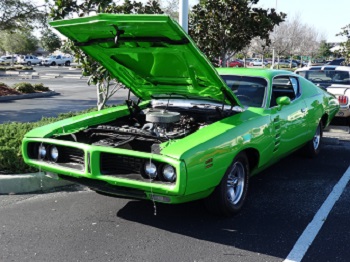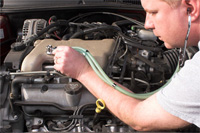
Whether you drive a Honda Civic or a Dodge Charger with a 440 V8 you can always strive for more miles per gallon. Review these simple fuel economy tips and see if you can increase yours. Often people know about these things, but fail to take action. It’s time to do something about it.
First get rid of excess weight by removing unnecessary items. When car makers try to improve efficiency and performance they reduce weight and so should you. Only carry essentials items in the trunk and consider removing those when possible. Less weight means better mileage. After a vacation or a trip make sure you remove all unnecessary items again, especially the heavy ones.
A hundred extra pounds can reduce fuel economy by up to 2%. I have a friend with a mini van that pulled out 2 rows of unused seating. He saved about 200lbs of dead weight. Maximize weight reduction by eliminating tools, jumper boxes, or other things you probably won’t use anyway. If your worried about getting stuck, remember you have a cell phone for back-up. If you really trust the cell phone or have a towing plan, consider removing the spare tire and jack. Or only lug them on long trips.
Keep your engine operating at its peak efficiency. A well-maintained engine will help you maximize gas mileage. A rich fuel ratio caused by a small vacuum leak, worn out spark plugs, clogged air filter and incorrect spark timing can have a big effect on gas mileage.
Follow the service schedules listed in your owner’s manual. Replace filters and fluids as recommended. If you have engine performance problems like rough idling, poor acceleration or stumble, solve these problems as quickly as possible. Studies have shown that depending on the cars condition an engine out of tune can increase fuel consumption by as much as 10 to 20%.
Fuel Economy and Engine Oil

Always use good engine oil and read through the manufacturer’s recommendations for weight. I stick to the recommended viscosity religiously, but prefer a synthetic or synthetic blend with a friction-reducing additive. They’re known to improve fuel efficiency by as much as 12%.
It’s been established beyond any doubt that synthetic oil and its increased lubricating qualities will allow the engine to turnover with less resistance. Chevrolet is using this method on the new Silverado to decrease gas consumption and boost performance. Well lubricated engines don’t have to work as hard so they produce more power while using less fuel. Don’t get lazy and just dump the oil, do the filter also.
The oil filter removes harmful dirt and grit from the engine, clean engines run smoother and easier. The cars air filter keeps impurities in the air from damaging internal engine components. Not only will replacing a dirty air filter improves your fuel efficiency it will protect the engine as well. Clogged filters can cause up to a 10% increase in gas consumption due to air starvation and in proper air fuel mixture.
Increasing Fuel Economy
Under inflated tires cause more resistance to travel, and they force the engine to work harder. Most people know this but still don’t do anything about it. Even cars with tire pressure monitors can still have inflation 5psi below maximum with out turning on the dash light.
Get the max air pressure in there by first letting the tires cool down before checking the pressure. Car makers are required to place a label in the car stating the correct tire pressure. The label may be found on the edge of the door or doorjamb, in the glove box, or on the inside of the gas compartment cover.
This is depending on the year make and model. If the label lists a PSI range use the higher number in order to maximize fuel efficiency. It’s important to note that radial tires can be under inflated yet still looked normal, so check the tires with a gauge.
Digital tire pressure gauges aren’t always the most accurate. I prefer an analog unit certified for racing. An average tire loses about one psi of air per month and one psi for every 10° drop in temperature. Changes in the ambient air temperature cause the tire pressure to fluctuate.
This is why tire pressure should always be checked when the tires or cool, preferably in the morning before driving the car. Most mechanics recommend that you check your tires air pressure about once per month and before a long trip.
Share this page with friends looking to save some gas.
This next link takes you back to the main page for increasing your fuel efficiency. Find more ways to increase fuel economy.
Learn more about this automobile website on the Start page for Auto-Facts.org.
Find more automotive information on both of my car sites.
